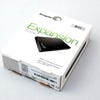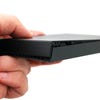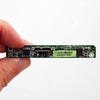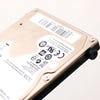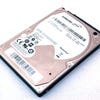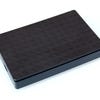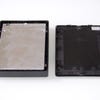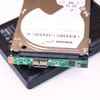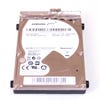How to cheaply upgrade your PS4 to 2TB
Updated! ?60 gets you a superb mass storage upgrade - and a USB caddy for your old drive.
This article was first published in August 2014, but one year on, the advice here still represents the cheapest and most cost-efficient way to upgrade your PS4 to 2TB. However, the upgrade situation isn't quite as clear as it was, because Seagate has released an updated 2015 model of our preferred upgrade drive. At the time of writing, both 2014 and 2015 models are available to buy and we would recommend the older version. The exact same drive is inside both units but the older version is a touch cheaper and the USB caddy is much, much easier to open. Important note: The 1TB version of the Seagate drive is not suitable for the PS4 transplant procedure. There is no SATA connection on the internal drive, meaning it is not compatible with the PlayStation 4. The 2TB models indicated work fine.
In our PlayStation 4 hard drive upgrade guide we found that using an SSD delivered the best experience when it came to producing shorter loading times, faster texture streaming, and generally smoother day-to-day operation of the console. However, these gains didn't translate consistently across all titles and in the end we found that the Hitachi Z7K1000 (a 7200rpm 1TB mechanical hard drive) provided us with the best price/performance ratio while also offering up a significant increase in storage capacity over the stock PS4 drive. Right now it costs around £45-£55 and that's pretty decent value for a 7200rpm drive - but the Seagate STBX2000401 and STEA2000400 are 2TB external USB drives available for £60-£65.
Clearly, a doubling of storage for just £15-£20 more represents a much more enticing deal, especially when the performance overall isn't that much worse (and is still faster than the stock 500GB drive). The fact that the HDD itself is contained in an enclosure shouldn't put you off. The chassis can be pried apart by carefully pushing a screwdriver, scalpel or knife through the grooves at the side (we recommend a scalpel for the revised STEA2000400 model), before pushing down to lift and unclip the top and bottom plastics from each other. This has to be done slowly around the unit to avoid any damage, but it is a fairly simple process that doesn't take long.
Once the drive is free from the plastic housing it's simply a case of unplugging the SATA to USB adaptor and then removing the screws (and rubber guards) on the sides so the unit fits into the PS4's hard drive caddy, and then into the console itself.
Order the drives covered in this article from Amazon, with free shipping:
Inside the supplied enclosure of both the 2014 and 2015 Seagate offerings, we find a Samsung Momentus Spinpoint ST2000LM003, rated at 5400rpm and featuring 32MB of cache. It retails for around £85 when purchased as a standard 2.5-inch internal notebook drive, but the remarkable reality is that it costs £25 less in its Seagate Expansion portable guise - for exactly the same drive! Bizarrely, it is often the case that bare laptop drives cost considerably more than their enclosed brethren. It's also worth pointing out that it's possible to reuse the Seagate enclosure to house the stock PS4 drive after it has been removed from the console, thus repurposing it as a 500GB portable storage unit - it simply clips back together with the old drive inserted. After formatting, it works perfectly well on PC, Mac and Xbox One.
The ST2000LM003 is also very useful in that it's a 9.5mm 2.5-inch drive. While we've found that the thicker 12mm drives will physically fit into the PS4, it's a tight fit that could transmit noise, vibration and heat through the chassis - so it's best to stick to the recommended 9.5mm and 7mm standards. You can try extracting a 2TB drive from another chassis, but you may well end up with a thicker, more undesirable unit. Alternatively, you may well end up with a unit that's virtually impossible to access without taking a hacksaw to the enclosure - the Toshiba drive we used in our Xbox One upgrade guide was impervious to all of our flat-headed screwdrivers, knives and scalpels.
Before delving into any PS4-based testing we benchmarked the drive using CrystalDiskMark and HD Tune in our PC to give us some raw performance data. We used a SATA-2 connection in order to get a closer match to the hardware inside the PS4 (there's no real need for SATA-3 in the console's use-case scenarios). In this case we were particularly interested to see if the higher density platters of this 2TB drive would help to offset the slower speed rotation compared to the 7200rpm unit.
| Stock Drive | 1TB Hitachi Z7K1000 | 1TB Seagate Hybrid | 240GB Crucial M500 SSD | 2TB Seagate | |
|---|---|---|---|---|---|
| Read Speed (Sequential/512K) | 116.5MB/s / 40.4MB/s | 132.9MB/s / 42.6MB/s | 95.9MB/s / 40.6MB/s | 191.9MB/s / 189.7MB/s | 122.1MB/s / 39.6MB/s |
| Write Speed (Sequential/512K) | 114.4MB/s / 40.7MB/s | 127.9MB/s / 55.7MB/s | 106.7MB/s / 62.8MB/s | 211.8MB/s / 62.7MB/s | 120.9MB/s / 42.6MB/s |
| Access Time | 21.1ms | 17.3ms | 6.9ms to 20.9ms | 0.06ms | 14.9ms |
| Gigs per GBP | - | 18.7 | 13.3 | 2.7 | 31 |
Order our comparison hard drive drives with free shipping:
- 1TB Hitachi Z7K100 from Amazon UK or Amazon US.
- 1TB Seagate SSHD Hybrid from Amazon UK or Amazon US.
- 240GB Crucial M500 SSD from Amazon UK or Amazon US.
Right off the bat the results are promising and represent an improvement over the stock PS4 hard drive. The ST2000LM003 reads data at speeds closer to the Hitachi Z7K1000 and also features slightly quicker access times when seeking between different files. Meanwhile, write speeds are slower than the Hitachi but the ST2000LM003 still beats out the stock PS4 drive across virtually all of the tests, meaning that we should see this hopefully translate into shorter load times and better texture streaming when gaming.
Indeed, the boost in speed we see in the benchmarks translates into tangible decreases in loading times across a few games, although the results are quite variable, suggesting that some titles benefit more from running off faster hard drives than others. In this case, boot and loading times are indeed shorter when using the Seagate Expansion drive over the PS4's stock HDD in Thief and Trials Fusion, with similar performance to that of the Hitachi Z7K1000 and the Hybrid SSHD.
By comparison, the results in Call of Duty: Ghosts and Metal Gear Solid 5: Ground Zeros are mixed - sometimes the ST2000LM003 delivers shorter loading times compared to the stock hard drive, sometimes there is no improvement at all. Curiously, Need for Speed: Rivals is the odd one out here because loading times are actually longer than the other drives when using the ST2000LM003, and we're not really sure why - we performed all background downloads and update installations before we began testing the game.
| Loading Time (secs) | Stock Drive | 1TB Hitachi Z7K1000 | 1TB Seagate Hybrid | 240GB Crucial M500 SSD | 2TB Seagate |
|---|---|---|---|---|---|
| COD: Ghosts - Initial Load | 23.60 | 19.67 | 19.22 | 16.53 | 23.37 |
| COD: Ghosts - Ghost Stories | 38.25 | 33.22 | 30.10 | 28.80 | 37.43 |
| COD: Ghosts - Struck Down | 29.22 | 27.13 | 26.85 | 26.85 | 29.96 |
| Thief - Level One Load | 52.08 | 34.67 | 34.67 | 34.43 | 39.54 |
| Thief - Level Two Load | 23.50 | 20.98 | 23.01 | 21.04 | 21.67 |
| Thief - Level Three Load | 38.97 | 37.12 | 36.72 | 35.57 | 38.58 |
| MGS5: Ground Zeroes - Initial Load | 44.93 | 43.30 | 41.67 | 32.82 | 43.17 |
| MGS5: Ground Zeroes - Renegade Threat | 15.33 | 14.13 | 15.20 | 14.43 | 14.46 |
| MGS5: Ground Zeroes - Classified Intel | 14.71 | 14.76 | 14.79 | 13.98 | 14.11 |
| NFS: Rivals - Initial Load | 18.25 | 18.14 | 17.59 | 16.40 | 19.88 |
| NFS: Rivals - Start Game | 24.85 | 24.85 | 25.10 | 23.17 | 33.55 |
| NFS: Rivals - To Race | 11.01 | 10.91 | 10.84 | 10.74 | 14.06 |
| Trials Fusion - Initial Load | 04.70 | 04.52 | 03.82 | 04.42 | 04.92 |
| Trials Fusion - Stage One | 15.11 | 13.17 | 13.10 | 13.10 | 12.99 |
| Trials Fusion - Waterworks | 13.01 | 09.67 | 09.62 | 09.62 | 10.47 |
Elsewhere, console boot times remain the same as the stock hard drive and the Hitachi 7200rpm unit, while disc-based installs are somewhat inconsistent, with speed determined by the efficiency of the PS4's Blu-ray drive. However, installations of digitally downloaded games do benefit from the Seagate's higher platter density compared with the stock 5400rpm drive. While the 2TB unit may spin the platters at a much lower speed, the physical size of the disk is larger - so more data is read in with each rotation.
As is to be expected, we encountered no improvements in frame-rate or frame-time stability when upgrading to a faster hard drive or SSD during our original testing, although there are benefits with regard to speeding up asset streaming on some games, helping to decrease or eliminate unsightly low resolution artwork. Trials Fusion features more noticeable texture streaming issues on the PS4 compared to the Xbox One game, with transitions between mip-maps (different quality level textures) occurring far more noticeably when using the console's stock hard drive, making the game ideal testing material.
We found that the use of an SSD dramatically improved performance with higher quality assets loading into RAM before these objects were rendered on screen, and while the Hitachi 7200rpm drive and the hybrid SSHD didn't deliver the same kind of speed boost, we still saw a reduction in the amount of very low resolution artwork displayed on screen during the visible LOD transitions.
So how well does the 2TB ST2000LM003 fare in comparison? Bearing in mind that platter rotation is significantly slower than the Hitachi 7200rpm drive, the results are certainly impressive - the increase in data density on the disk pays off. Across a general run of play we see higher quality assets streaming in noticeably quicker compared to the stock drive pretty much on a permanent basis. Generally speaking, the 2TB 5400rpm drive can't keep up with an SSD, but it battles it out nicely with the 7200rpm and hybrid units to the point where we had to look at things on a frame-by-frame basis to pick up individual differences.
Overall, when it comes to upgrading your PS4 hard drive, it's difficult to recommend the performance options when the gains on anything other than an SSD can be rather marginal, and when the price per gig with the Seagate Expansion deal is light years ahead of the otherwise preferred solid-state solution. In truth, bearing in mind that few titles are impacted by drive performance, we would have been happy with speeds equivalent to the stock drive, but the ST2000LM003 appears to better the standard unit - a welcome bonus on what is a remarkable deal.
So are there any downsides? Well, it's safe to say that taking a screwdriver or scalpel to the caddy is an automatic, do-not-pass-go trip to warranty hell should anything go wrong, meaning that you'll get no support from Seagate should the drive fail. On top of that, the 2015 STEA2000400 Seagate is much harder to open than the 2014 model, meaning that chipping on the insertion point when you try to prise the case apart is really difficult to avoid. If you do decide to go down this route, you should thoroughly test the unit in a PC or Mac before prying it open in order to upgrade your PlayStation 4. But the rewards are clearly worth it - this is the best-value route to 2TB of storage we could find, and a bonus caddy for your old drive is the icing on the cake.


